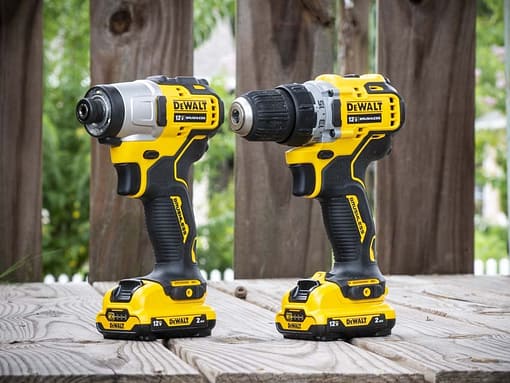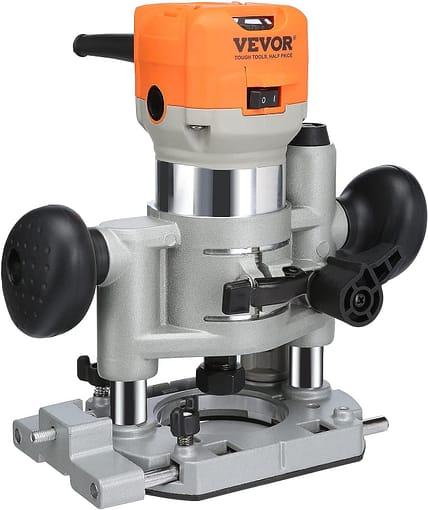So, you’ve found yourself in a situation where you need to work with electricity, huh? Whether you’re an electrician, a DIY enthusiast, or simply tackling some household repairs, it’s essential to prioritize safety above all else. That’s why we’ve put together a handy guide brimming with invaluable tips that will keep you safe and sound while you tackle those electric projects. From avoiding potential hazards to using protective gear, we’ve got you covered. So, let’s get started and make sure you stay shock-free throughout your electrical endeavors! When it comes to working with electricity, safety should always be your top priority. Electrician or not, it’s crucial to take the necessary precautions to protect yourself from potential hazards. In this comprehensive guide, we’ll cover everything you need to know about maintaining a safe working environment when dealing with electricity.
Protective Gear
Wear insulated gloves
One of the most essential pieces of protective gear when working with electricity is insulated gloves. These gloves are designed to provide a barrier between you and any electrical current, reducing the risk of electric shock or burns. Ensure that your gloves are made with high-quality materials and are properly rated for the voltage you are working with.
Wear safety glasses or goggles
Your eyes are extremely vulnerable when working with electricity. Whether it’s flying debris, sparks, or chemicals, safety glasses or goggles are a must to protect your eyes from potential harm. Choose eyewear that is specifically designed for electrical work and ensure they are approved by relevant safety standards.
Use a face shield
In some instances, safety glasses or goggles alone may not provide sufficient protection. When working with high-voltage equipment or performing tasks that could generate arcs or flashes, it’s crucial to wear a face shield. A face shield will help guard your face against any potential hazards and minimize the risk of injury.
Wear non-conductive footwear
Electricity always takes the path of least resistance, and that includes the ground. To prevent electric shock, it’s essential to wear non-conductive footwear when working with electricity. This means avoiding shoes with metal components and opting for footwear made from materials such as rubber or leather.
Use flame-resistant clothing
When working with electricity, the risk of fire is always present. Flame-resistant clothing provides an extra layer of protection, reducing the risk of burns in the event of a fire. Invest in flame-resistant shirts, pants, and coveralls that are specifically designed for electrical work.
Safety Precautions
Turn off the power source
Before starting any electrical work, always turn off the power source to the area you will be working in. This simple yet crucial step will help eliminate the risk of electric shock or accidental activation of equipment. Take the time to locate the correct circuit breaker or power switch, and ensure it is completely switched off.
Lockout/Tagout procedures
In situations where multiple people might have access to the power source, it’s important to implement lockout/tagout procedures. This involves physically locking or tagging the power source to prevent anyone from accidentally turning it back on while you’re working on it. Communicate with other individuals involved and establish a clear protocol for lockout/tagout procedures.
Use a voltage tester
Even when the power source is turned off, it’s always better to be safe than sorry. To be absolutely certain that there is no and will be no electrical current present, use a voltage tester. These handheld devices allow you to check if a circuit is live or not before you start working on it. Always verify with a voltage tester to ensure your safety.
Avoid working alone
While it may be tempting to work alone, having someone else present when working with electricity is always recommended. Their presence can provide an extra set of eyes to identify potential hazards or assist in case of an emergency. If working alone is unavoidable, make sure to inform someone about your whereabouts and establish regular check-ins.
Follow safety procedures and guidelines
Every workplace or project should have its own set of safety procedures and guidelines when it comes to electrical work. It’s crucial to familiarize yourself with these protocols and strictly adhere to them. These procedures are put in place to keep everyone safe, so don’t take them lightly. If you’re unsure about any safety procedures, seek clarification from a supervisor or safety professional.

Proper Training and Knowledge
Get trained on electrical work
Before engaging in any electrical work, it’s imperative to undergo proper training. Electrical systems can be complex, and understanding the fundamentals is crucial for your safety. Seek out certified training programs or apprenticeships to gain the necessary knowledge and skills to work with electricity.
Understand electrical hazards
Alongside training, it’s essential to have a solid understanding of electrical hazards. Educate yourself on the risks associated with electricity, such as electric shock, arc flashes, and fires. Recognizing these hazards and knowing how to mitigate them will greatly reduce the risk of accidents and injuries.
Know the location of circuit breakers and electrical panels
Familiarize yourself with the layout of your workspace, particularly the location of circuit breakers and electrical panels. In case of an emergency or the need to shut off power, knowing where these essential components are will save valuable time. Take the time to familiarize yourself with their locations and labels to expedite any necessary actions.
Learn how to use electrical tools properly
Electrical tools are essential for electrical work, but they can also be dangerous if used incorrectly. Make sure you’re well versed in their proper usage and follow the manufacturer’s instructions. Refrain from taking shortcuts or improvising tools. Using electrical tools in the correct manner greatly reduces the risk of accidents and electrical hazards.
Stay informed about electrical codes and regulations
Electrical codes and regulations exist to ensure safety and maintain standards in electrical work. It’s important to stay up to date with these codes and regulations to ensure compliance and best practices. Regularly review any changes or updates and implement them into your work practices.
Risk Assessment
Identify potential electrical hazards
Before starting any electrical work, conduct a thorough risk assessment of the area. Look out for potential hazards such as exposed wires, damaged equipment, or overloaded circuits. Identifying these hazards beforehand allows you to take appropriate measures to mitigate the risks associated with them.
Inspect electrical equipment and cords for damage
Regularly inspect all electrical equipment and cords for any signs of damage or wear. Frayed cords, cracked insulation, or loose connections are warning signs that electrical equipment may be compromised. Replace any damaged or malfunctioning equipment immediately to prevent accidents or fires.
Check for proper grounding
Proper grounding is essential in electrical systems as it provides a path for electrical current to flow safely to the ground. Check that all electrical equipment and outlets are properly grounded. If you have any doubts about grounding, consult a qualified electrician to ensure your safety.
Beware of overhead power lines
Working near overhead power lines comes with its own set of risks. Always be aware of your surroundings and keep a safe distance from these lines. Make sure your tools and equipment are kept far away from them as well. If you need to work near power lines, contact the utility company for guidance and assistance.
Assess the environment for fire hazards
Electrical work can easily lead to fires if proper precautions are not taken. Before starting any work, assess the surrounding environment for fire hazards. Look for anything that could potentially ignite, such as flammable materials, clutter, or inadequate ventilation. Remove or mitigate these hazards to minimize the risk of fires.

Safe Working Practices
Use insulated tools
Insulated tools offer an extra layer of protection by providing insulation against electrical current. When working on live circuits, always use insulated tools that are specifically designed for electrical work. These tools significantly reduce the risk of electric shock and ensure your safety.
Avoid water and damp areas
Water and electricity do not mix. When working with electrical equipment, avoid wet or damp areas as moisture can conduct electricity. If moisture is present, either wait for it to dry up or take necessary precautions to protect yourself. Dry the area thoroughly before attempting any electrical work.
Keep a safe distance from energized parts
Maintaining a safe distance from energized parts is vital to prevent electric shock or other accidents. Follow the recommended safe distances according to your work environment and relevant safety regulations. Be cautious when accessing electrical panels or performing tasks near energized parts.
Use caution when removing tools from live circuits
If you need to remove a tool or equipment from a live circuit, exercise caution. Ensure that you are not in contact with any part of the equipment that is connected to the electrical current. Use insulated gloves and take your time to avoid accidental contact that could result in electric shock.
Avoid overloading circuits
Overloading circuits can lead to overheating, fires, or equipment failure. Be mindful of the load capacity of circuits and avoid exceeding their limits. Distribute your electrical load appropriately across different circuits and use power management techniques, such as using power strips with surge protectors.
Emergency Preparedness
Know the location of emergency shut-offs
In the event of an emergency, it’s crucial to know the location of emergency shut-offs. Familiarize yourself with the shut-off points for the entire electrical system, as well as individual circuits. This knowledge will enable you to react promptly and cut off power if needed to minimize further risks.
Have a fire extinguisher nearby
Electrical fires can escalate quickly, so it’s essential to have a fire extinguisher on hand. Ensure that the fire extinguisher is suitable for electrical fires and regularly check that it is in good working condition. Familiarize yourself with its usage and keep it easily accessible in case of emergencies.
Establish an emergency escape plan
When working with electricity, it’s crucial to have an emergency escape plan in place. Familiarize yourself with the escape routes and exits in your work area. Communicate the plan with all individuals involved and conduct regular drills to ensure everyone knows the procedures to follow in case of emergencies.
Know how to perform CPR and basic first aid
In emergencies, quick action can make all the difference. Knowing how to perform CPR (cardiopulmonary resuscitation) and basic first aid can help save lives during critical moments. Consider taking a certified CPR and first aid course to equip yourself with valuable life-saving skills.
Keep emergency contact numbers readily available
Always keep a list of emergency contact numbers easily accessible. Post them in your workspace and store them in your phone or another portable device. In case of an emergency, these numbers will help you quickly connect with the appropriate authorities or medical professionals.
Electrical Fire Safety
Never use water to extinguish electrical fires
Using water to extinguish electrical fires is extremely dangerous and can lead to severe injuries or even death. Water conducts electricity and can cause electrocution. Never attempt to put out an electrical fire with water; instead, use a fire extinguisher specifically designed for electrical fires.
Use a fire extinguisher approved for electrical fires
When confronted with an electrical fire, use a fire extinguisher approved for electrical fires. These extinguishers contain specific agents that safely extinguish electrical fires without conducting electricity. Ensure that your fire extinguisher is in good working condition and easily accessible at all times.
Cut off power before attempting to extinguish a fire
If you must attempt to extinguish an electrical fire, always cut off the power supply first. This extra step helps prevent the fire from reigniting or spreading further. Remember, your safety is the top priority, so never put yourself at risk. Only attempt to extinguish the fire if you feel confident and have the appropriate training.
Evacuate and call emergency services if necessary
In some situations, an electrical fire may be too severe to be safely extinguished. If you are unable to control the fire or if it poses a significant risk, evacuate the area immediately. Call emergency services and provide them with accurate information to ensure a swift response. Do not attempt to be a hero if your safety is compromised.
Follow fire safety protocols and evacuation procedures
Prevention is key when it comes to electrical fires, but in the event of a fire, following fire safety protocols and evacuation procedures is crucial. Familiarize yourself with these protocols and regularly review them. Conduct fire drills and ensure that all individuals involved are aware of the procedures to follow in case of a fire.
Preventing Electrical Shocks
Avoid working near live circuits when possible
Whenever possible, avoid working on live circuits. Instead, de-energize the circuit and follow proper lockout/tagout procedures. By minimizing your exposure to live circuits, you significantly reduce the risk of electrical shocks and other accidents.
Use Ground Fault Circuit Interrupters (GFCIs)
Ground Fault Circuit Interrupters (GFCIs) are designed to quickly detect electrical imbalances and shut off power to the circuit. Use GFCIs in areas where there is a heightened risk of electric shock, such as bathrooms, kitchens, or outdoor workspaces. GFCIs help prevent serious injuries by reducing the duration and severity of electrical shocks.
Inspect electrical cords for damage or fraying
Regularly inspect electrical cords for any signs of damage or fraying. Damaged cords can pose serious risks, including electrical shocks and fires. If you notice any issues with the cords, promptly replace them with new ones or seek professional repair services.
Avoid using damaged or malfunctioning electrical tools
Just like electrical cords, damaged or malfunctioning electrical tools can pose significant hazards. They increase the risk of electrical shocks or equipment failure. Always thoroughly inspect your tools before use, and if any issues are detected, repair or replace them as necessary.
Secure loose wiring and cover exposed wires
Loose or exposed wiring can be a recipe for disaster. Loose wiring increases the risk of electrical arcs, sparks, and eventual fires. Make sure to secure any loose wiring and cover exposed wires properly. If you’re unsure how to handle loose or exposed wiring, consult an electrician who can assist you.
Proper Equipment Handling
Disconnect tools before servicing or cleaning
When servicing or cleaning electrical tools, always disconnect them from the power source first. This precaution eliminates the risk of accidental activation or electrical shock during maintenance. Take the time to ensure that the tool is completely disconnected and de-energized before starting any service or cleaning procedures.
Keep tools and equipment dry
Water and electricity are a dangerous combination, so always keep your tools and equipment dry. Moisture can lead to electrical shocks and damage to your tools. Store your tools in a dry location and avoid exposing them to water or damp environments whenever possible.
Handle plugs by the plug head, not the cord
To avoid putting stress on the electrical cords, always handle plugs by the plug head, not the cord. Pulling or twisting the cord can damage the internal wiring and potentially lead to electrical hazards. Protect the integrity of your cords by handling plugs with care.
Store tools in a dry and secure location
Proper tool storage is essential for maintaining their safety and longevity. Store your electrical tools in a dry and secure location to avoid moisture damage and unauthorized access. Choose a location that is easily accessible but protected from environmental factors that could compromise the tools’ safety.
Avoid using damaged or worn-out equipment
Using damaged or worn-out equipment is not only unsafe but also inefficient. Damaged equipment can lead to accidents or subpar results. Regularly inspect your equipment and promptly replace any damaged or worn-out items. Investing in well-maintained equipment ensures your safety and improves your overall productivity.
Regular Maintenance and Inspections
Schedule routine electrical equipment inspections
Electrical equipment should undergo regular inspections to identify any potential issues or hazards. Establish a routine maintenance schedule and adhere to it. Check for signs of wear, loose connections, or malfunctions. Regular inspections ensure that your equipment is in good working condition and mitigate the risk of accidents.
Replace damaged or worn-out electrical components
During inspections, if you discover any damaged or worn-out electrical components, replace them immediately. Faulty components increase the risk of electrical hazards and compromise the integrity of your electrical systems. Prioritize the safety of your work environment by promptly replacing any compromised components.
Maintain a clean and organized workspace
A clean and organized workspace is not only conducive to productivity but also crucial for safety. Cluttered workspaces increase the risk of accidents and make it difficult to identify potential hazards. Regularly clean your workspace, store tools and materials appropriately, and maintain clear pathways to ensure a safe working environment.
Clean electrical equipment regularly
Dirt, dust, and debris can accumulate on electrical equipment and compromise their performance and safety. Establish a regular cleaning schedule for your equipment to prevent build-up. Use appropriate cleaning methods and ensure the equipment is completely dry before use.
Keep electrical panels and breakers accessible
Electrical panels and breakers require routine inspections and maintenance. To ensure ease of access and quick response times, keep these essential components easily accessible. Avoid storing or placing objects in front of panels or breakers that could hinder emergency shutdown procedures.-
By following these safety tips and practicing safe working habits, you can greatly reduce the risk of accidents and injuries when working with electricity. Remember, your safety and the safety of those around you should always be the main priority. Take the time to implement these measures and ensure an electrically safe working environment.













